American Fort Worth Circle
American, (1912–1970)
Edward Dickson Reeder, artist, was born on February 6, 1912, in Fort Worth, the first child of Dean W. and Edwina (Dickson) Reeder. He began to study drawing and painting with Sallie Blythe Mummert and Sallie Gillespie while still in elementary school. After graduating from Central (later Paschal) High School in Fort Worth in 1930, he left for two years of study at the Art Students League in New York City, where he attended the classes of portraitist Ivan Olinsky, among others. Reeder returned to Fort Worth for a year and in 1933 traveled to Taxco, Guerrero, Mexico, where he studied with the portrait painter Wayman Adams. In the mid-1930s Reeder traveled and worked in Ireland, London, and Paris. During this period he began to exhibit his work by participating in the Southern States Art League exhibitions in 1934, 1938, and 1939 and the Biennial at the Corcoran Gallery of Art in 1939. In Paris he studied abstract painting with Alexandra Exter, who also designed for the Ballet Russe. In 1937 he met Flora Blanc, an artist working with Fernand Leger, and together they studied printmaking at Atelier 17, a workshop run by Stanley William Hayter that was frequented by Pablo Picasso, Marc Chagall, Max Ernst, and Joan Miró. On December 11, 1937, Flora Blanc and Dickson Reeder were married in New York City. They lived in the Chelsea district painting and illustrating books until 1940, when they moved to Fort Worth. There Reeder painted and taught, first at Texas Wesleyan College and later at Our Lady of Victory College. In 1942 he and his wife had a son. Both Dickson and Flora Reeder were active members of the Fort Worth Art Association.
During the early 1940s Reeder's work garnered widespread recognition: he won prizes at four Fort Worth Art Association exhibitions (1940, 1942, 1944, and 1945), in addition to awards for paintings exhibited at the Third and Fourth Texas General exhibitions (1941–42). Outside of the state his work was shown at the Carnegie Institute of American Painting Exhibition in Pittsburgh (1941) and the Artists for Victory exhibition at the Metropolitan Museum of Art in New York City (1942). In 1944 he was included in the Six Texas Painters show at the Weyhe Gallery in New York City. He spent the summers of 1944 and 1945 in New York City, where he attended the New School for Social Research and worked with Hayter and Claude Domec while experimenting in the wax medium favored by the latter. In May 1945 the Fort Worth Art Association assembled Reeder's first solo exhibition at the Public Library Galleries.
In 1945 the Reeders established the Reeder School of Theater and Design for Children. For the next few years Reeder devoted much of his time to teaching, designing, and coproducing the school's annual plays, although he also continued to exhibit his work and paint portraits on commission. His fall from a bridge in Sneden's Landing, New York, in 1947 seriously injured one of his hip joints, which required a series of operations. His career continued to flourish, however; he was included in the 1950 exhibition American Painting Today at the Metropolitan and in the 1952 Texas Artists Exhibition at the Knoedler Gallery, New York City. He served as the National Regional Director of Artists Equity in 1951.
The Reeders made periodic trips to Europe throughout the 1950s and in 1958 closed the Reeder School for a two-year sabbatical in Paris. There Reeder prepared for a large one-man show in Fort Worth and worked with Hayter at Atelier 17, where he experimented with color printmaking. In 1959 he mounted a solo exhibition at Gallery Koepcke in Copenhagen, Denmark, and showed his gouaches and etchings in the Nouvelles Réalités exhibition at the Musée Moderne in Paris. In 1960 Reeder returned to Fort Worth, where an exhibition of his work opened at the Fort Worth Art Center in June. From 1961 to 1963 he painted a large number of commissioned portraits, in addition to exhibiting his work in Fort Worth, Dallas, Lubbock, Wichita Falls, Houston, and Taos, New Mexico. Although the lack of an appropriate facility frustrated attempts to reopen the Reeder school, in his later years Reeder continued to travel, paint, produce plays, and exhibit his work. He exhibited with the Fort Worth Print Society in 1967 and showed his paintings at the Laguna Gloria Art Museum in Austin in 1968.
Reeder worked in pastels, watercolors, gouache, and oils; he was also an accomplished etcher and engraver. His style ranged from representative portraits, nudes, and mysterious figurative paintings to abstract works. His interest in music, theater, and dance undoubtedly influenced his frequent selection of oriental, medieval, and Renaissance themes. Such works as The Dispute (1944) and The King and Queen Playing Cards (1961) seem to isolate one scene from a sequence of events. In other works such as Cloistered Bird (1945) and Entrance to Lapis Mine (1960) Reeder used shallow space and luminous color to establish an otherworldly atmosphere. His abstract works ranged from the fluid geometric grid of I Love Paris (1959) to soft-focused collages of color in works such as Storm (1958) and In the Forest (1959). His skill in portraiture is shown in the forceful Portrait of Andrew Dasburg (1957) and in his close-up self-portrait (1953), now in the Modern Art Museum of Fort Worth.
Reeder continued to work after becoming ill in 1969. He died on May 8, 1970. His works are held by the Dallas Museum of Art, the Modern Art Museum of Fort Worth, the Colorado Springs Fine Arts Center, the Brooklyn Museum, and the Art Institute of Chicago. He has been the subject of three posthumous retrospective exhibitions. In 1988 the city of Fort Worth declared February 11 "Dickson and Flora Reeder Day" in recognition of their service to the city.
BIBLIOGRAPHY:
Dickson Reeder: A Retrospective Exhibition (Fort Worth: Texas Christian University Department of Art and Art History, 1988). Peter Haskins Falk, ed., Who Was Who in American Art (Madison, Connecticut: Sound View, 1985). Fort Worth Star-Telegram, May 9, 1970. Vertical Files, Dolph Briscoe Center for American History, University of Texas at Austin.
Abstract Head 1998.040
Andrew Dasburg 1998.045
Changes 2001.005
Eidolon 2016.021
Entrance to the Lapis Mine 1993.083
Female Nude with Outstretched Arms 2007.046
Flora 1981.150
Flora 2016.034
Hierogrammatic 2016.022
Imagined Sculpture of H.M. No.3 1998.039
Insect 2016.019
Joseph Hawthorne 1999.014
Lemuroids 2016.020
Phantom Grasshopper 1994.026
Portrait of Bill Bomar 1989.017
Reilly Nail 2007.044
Robert E. Nail Jr. 1982.013
Stephanie 2016.017
Study of Four Young Male Heads 2007.045
Untitled (young man in grey shirt) 1998.038
Untitled [study of male figure] 2001.006
Wyldon Burgess Nail Harrold 1981.151
Young David 1995.020

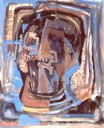
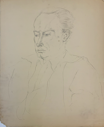
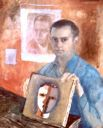
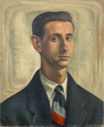

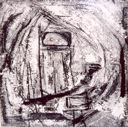
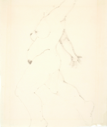
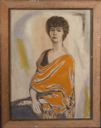


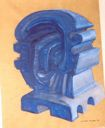
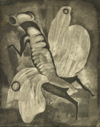






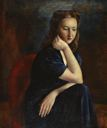
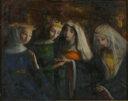

![Image of Untitled [double sided - picnic scene and woman]](/Media/Thumbnails/2001.004verso.png)
![Image of Untitled [study of male figure]](/Media/Thumbnails/2001.006.png)


